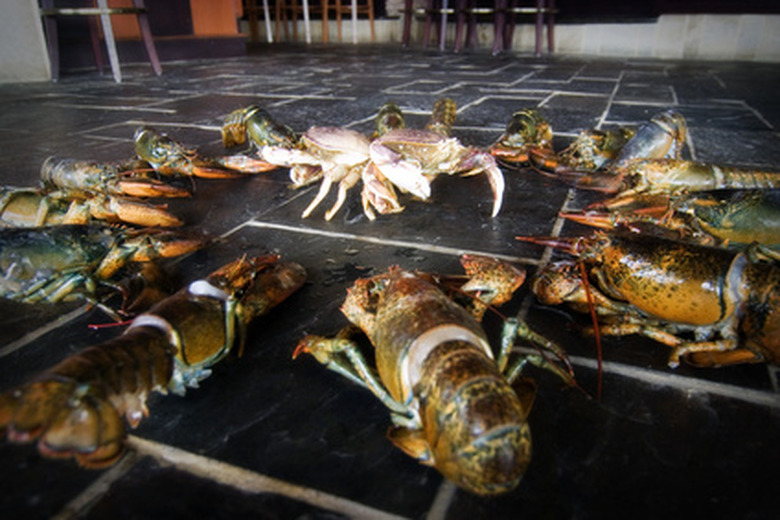How To Calculate Chiller Efficiency
Tip
Water chilling methods are far more efficient than air-exchange methods (regular air conditioning) for cooling larger facilities.
Warning
Unmonitored chiller systems may freeze the recirculating water causing mechanical damage if the heat load is not balanced to chiller capacity.
Cold water chillers see widespread application both in industry, commerce and architectural air conditioning. While they are used in predominantly larger venues, their efficiencies are still determined by the simple air conditioning concept of electrical energy-in (kW-hr) to energy-moved (Btu/hr (or Tons). Air conditioners and chillers are both basically heat pump systems, although chillers use recirculating water instead of air to convey heat on both evaporator and condenser aspects of their refrigeration cycles. Properly reconciling the various engineering units and conversion factors is vital to the efficiency calculation process.
Water Chiller for Cool Room Space
Step 1
Define the water chiller application. In this instance, a chilled water system is used to keep food manufacturing areas near 40 degrees F. The chiller system is recirculating 40 gallons per minute of water that is chilled by 24 degrees F and using 24.8 kW/hr of electricity to produce the refrigeration. With this information you can calculate chiller efficiency in terms of the energy efficiency ratio, or EER, and the coefficient of performance, or COP, for chillers.
Step 2
Calculate the chiller capacity in tons of refrigeration. The formula for total heat removed in a chiller installation is h = 500 X q X dt where h = total heat removed in Btu/hr, q is the chilled water flow rate in gpm, and dt is the chilled water's total temperature differential. Substituting, h = 500 X 40 gpm X 24 deg-F = 480,000 Btu/hr. If 1 Ton of refrigeration equals 12,000 Btu/hr, then the system has a cooling capacity of 40 Tons of refrigeration.
Step 3
Calculate the system efficiency by the air conditioning efficiency formula EER = Btu/hr cooling/watts consumed. Substituting actual values, 480,000 Btu/hr/24.8 kW/hr = 480,000 Btu/hr/24,800 watts/hr = 19.35. This is very high cooling performance compared to the 2010 SEER standards of 13-14 for domestic air conditioning which reflects the higher efficiency of the chilled water strategy. COP would be the EER (19.35) X 0.293 = 5.67.
Chilled Water For Food Refrigeration
Step 1
Define the chilled water application. Seawater with a specific enthalpy of 0.94-Btu/lb/deg F is being chilled by 18-degrees F to keep seafood alive and fresh. If you know that the system uses 69.06 kW-hr to chill 6,000-gallons/hr of this recirculating seawater, you can calculate the chiller efficiency.
Step 2
Calculate the total Btu/hr being removed by the chiller system. Since h = 500 X q X dt, and the heat capacity of seawater is only 0.94 Btu/lb, then the modified formula will be h = 500 X q X dt X 0.94 = 500 X 6,000 gph/100 gpm X 18 deg-F X 0.94 = 846,000 Btu/hr/12,000-Btu/hr/Ton = 70.5 Tons of refrigeration.
Step 3
Calculate chiller system efficiency by dividing the 846,000 Btu/hr by the 69.06 kW-hr consumed to yield an EER of 12.25, and a COP of 3.59.
References
- Progress Energy: Chiller Optimization and Energy Efficient Chillers
- Air Conditioning/Heating/Refrigeration News: How Sensor And Gauge Accuracy Impact Chiller Efficiency
- Chilled-water systems formulas – evaporator and condenser flow rates
- Calculating chiller and cooling tower refrigeration in tons
- Air Conditioner Selection: EER, SEER, and COP. No, Not Code Languages



